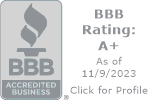IPM for House Mice and Other Small Rodents to Exterminate in Calgary
 Forty percent of mammal species are rodents, and they are found in vast numbers on all continents other than Antarctica. Common rodents include mice, rats, squirrels, porcupines, beavers, chipmunks, guinea pigs, and voles. Rodents have sharp incisors that they use to gnaw wood, break into food, and bite predators. Most eat seeds or plants, though some have more varied diets. Some species have historically been pests, eating seeds stored by people and spreading disease.
Forty percent of mammal species are rodents, and they are found in vast numbers on all continents other than Antarctica. Common rodents include mice, rats, squirrels, porcupines, beavers, chipmunks, guinea pigs, and voles. Rodents have sharp incisors that they use to gnaw wood, break into food, and bite predators. Most eat seeds or plants, though some have more varied diets. Some species have historically been pests, eating seeds stored by people and spreading disease.
The name comes from the Latin word rodents, “gnawing one” (from the verb rodere, “gnaw”).
The house mouse, Mus musculus, is one of the most troublesome and costly rodents in Calgary and throughout Canada. House mice thrive under a large variety of conditions and are found in and around homes, commercial structures and also open fields and agriculture land. They consume and contaminate food meant for humans and livestock. That can transmit pathogens that cause diseases as salmonellosis a form of food poisoning.
Because house mice are so small, they can gain entry into homes and other buildings much more easily than rats as result mouse infestations in homes and commercial properties are very common and very likely unless one does some necessary preventive rodent control.
Keeping Proper Sanitation To Maintain Rodent and Mice Control
Because mice can survive in tiny areas with limited resources, controlling them can be challenging especially in and around older structures but not exclusive to them. A home is a prime target because most homes are also places where food is stored. Add a pet and pet food, a bird feeder in the yard and the attraction to mice are quantified by 10. House mice will get into a structure unless they are excluded and or exterior preventive rodent control is considered. Although proper sanitation and housekeeping will seldom control a mouse infestation, it most certainly will be less of an attractant to mice as would be poor sanitation.
Exclusion is the most effective and permanent rodent control for structures
Build them out by sealing all gaps and cracks around pipes and vents. Every opening more significant than a ¼ inch should be considered and should be sealed airtight. However, if the exterior perimeter is infested with mice, the best rodent proofing will not keep them out unless you plan never to open the doors again.
External Habitat alterations to control rodents in Calgary AB
In addition to rodent proving the structure to be rodent free, external alterations can be made to ensure mice are not right against the building. Inspect and rectify the following: Remove wood piles and building material stored right against the house. Keep the vegetation trimmed right against the house and possibly install a rodent barrier around the structure. A rodent barrier consists of a 14’ x 5’ deep gravel strip. Keep dense shrubbery in check by trimming it regularly. Dense shrubbery like junipers will provide excellent harborage area and food source for mice and voles. Keep bird feeders as far away from the house as possible and or install a catch tray to eliminate spillage from the feeder to the ground. Well maintained composts are usually not an attractant to mice, but if it is an open pit style compost mice will move in. A shallow deck provides better protection for mice than a higher open deck would. Never feed your pet outside. Maintaining a dish with dog food on your deck is asking for a mouse infestation in short order.
The Rodent Exterminators You Need To Hire For Your Calgary Rodent Control!
In conclusion. Some things can be done to control mice, but if you are a bird lover and like to see the birds coming to your house, you should not have to give this up because of the threat from mice. All we need to do is maintaining some level of rodent, mouse, and squirrel control, so mice that are inevitably being attracted by the seeds need to be kept in check. The best low maintenance, low-cost solution is an exterior rodent control stations. The rodent bait is secured in the station; the station is secured to the ground and adequately installed will give you up to six months of the control of rodents.



